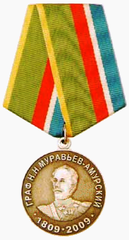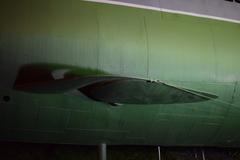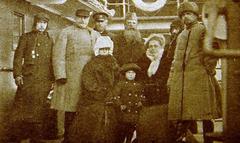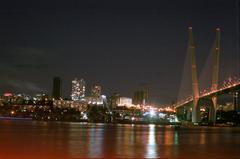
Russky Bridge Vladivostok: Visiting Hours, Tickets, and Comprehensive Travel Guide
Date: 03/07/2025
Introduction
The Russky Bridge in Vladivostok stands as a beacon of modern Russian engineering and a vital link between the mainland and Russky Island. Recognized as the world’s longest cable-stayed bridge by central span, it not only redefines the city’s skyline but also symbolizes Russia’s ambitions for economic integration and development in the Asia-Pacific region. This guide presents an in-depth look at the bridge’s history, engineering triumphs, strategic importance, visitor information, and practical travel tips to help you make the most of your visit (BuiltConstructions; The Diplomat).
Table of Contents
- Historical Context and Motivation for Construction
- Engineering Marvels and Urban Transformation
- Strategic and Economic Importance
- Visiting Russky Bridge: Hours, Tickets, and Accessibility
- Visitor Experience: Tips and Safety
- Nearby Attractions and Events
- Sustainable Tourism and Responsible Visiting
- Frequently Asked Questions (FAQ)
- Visuals, Maps, and Additional Resources
- Conclusion
Historical Context and Motivation for Construction
For decades, Russky Island was accessible only by ferry, limiting its development potential. The decision to host the 2012 Asia-Pacific Economic Cooperation (APEC) Summit in Vladivostok became the catalyst for building the Russky Bridge, transforming both the island and the city into international hubs (vladivostok.travel). The bridge project showcased Russia’s commitment to modernizing its Far Eastern infrastructure, overcoming extreme weather, complex geology, and tight construction deadlines through cutting-edge engineering and international collaboration (freyssinet.com).
Engineering Marvels and Urban Transformation
The Russky Bridge features a record-breaking cable-stayed central span of 1,104 meters, with a total length of 3,100 meters. Its A-shaped pylons rise to 320 meters, towering above the city and even surpassing the Eiffel Tower in height (ScienceDirect). The bridge employs 168 parallel-strand cable stays, some stretching up to 582 meters, and a deck built to withstand Siberian winters as well as seismic activity (ENR; New Civil Engineer).
Construction was carried out through a partnership between Russian and international firms, including USK MOST OJSC and Freyssinet, overcoming severe winds and freezing temperatures to ensure timely completion for the APEC Summit (freyssinet.com). The bridge’s striking silhouette, enhanced by cable stays painted in the Russian tricolor, has become an iconic symbol of Vladivostok (Amusing Planet).
Strategic and Economic Importance
More than an architectural feat, the Russky Bridge is integral to Russia’s Far Eastern strategy. It physically connects Russky Island—once remote and undeveloped—to Vladivostok’s economic and educational core. The bridge facilitated the rapid development of the Far Eastern Federal University (FEFU), now a major academic and research center hosting international students and conferences (TravelSetu). The improved accessibility has spurred new hotels, resorts, and recreational facilities, revitalizing tourism and bolstering Vladivostok’s role as Russia’s Pacific gateway (Travelertopia).
Visiting Russky Bridge: Hours, Tickets, and Accessibility
Hours and Access
- Vehicles: The bridge is open 24/7 for vehicular traffic.
- Pedestrians and Cyclists: Access is typically allowed from 6:00 AM to 10:00 PM. Hours may vary seasonally or during adverse weather (Vladivostok City).
- Fees: There are no entrance fees or tickets required for any mode of crossing; access is free.
Transportation
- By Bus: Public buses connect the city center to Russky Island. Tickets cost 30–50 RUB and are sold onboard or at kiosks (2vladivostok.ru).
- By Taxi/Car: Taxis and ride-hailing services (Yandex.Taxi, Uber) provide direct transport. Driving from downtown Vladivostok takes 10–20 minutes, subject to traffic.
- On Foot/Bicycle: Dedicated walkways and cycling lanes are available. Wheelchair users and strollers can access most areas, though some ramps may be steep (adventurebackpack.com).
Accessibility and Safety
- Most paths are wheelchair-accessible; viewing platforms at both ends offer easy access and detailed information about the bridge.
- The bridge is built to modern safety standards, with lighting, cameras, and emergency call boxes. Security patrols are present.
- Caution is advised during winter due to strong winds and icy surfaces.
Visitor Experience: Tips and Safety
- Best Times to Visit: Early morning (6:00–8:00 AM) for minimal crowds and soft lighting; late afternoon for sunsets and cityscapes.
- Photography: The bridge is a favorite for photographers and drone enthusiasts (drones permitted when following local regulations).
- Facilities: Restrooms, food kiosks, and free parking are available at both ends of the bridge.
- Weather: Summers are mild; winters are cold and windy. Dress appropriately and monitor weather alerts.
- Language: Russian is primary, but English is common in tourist areas.
Nearby Attractions and Events
- Russky Island: Features the FEFU campus, Primorsky Oceanarium, beaches, hiking trails, and military fortifications (justmetravels.com).
- Golden Bridge: Another iconic Vladivostok landmark.
- Events: The bridge and island host annual festivals, marathons, and the Eastern Economic Forum, often with special lighting and tours (Switch Bridge Tours).
Sustainable Tourism and Responsible Visiting
Visitors are encouraged to:
- Use designated trails and viewing areas.
- Dispose of waste responsibly.
- Respect local wildlife and historical sites.
- Support eco-friendly businesses (travelsetu.com).
Frequently Asked Questions (FAQ)
Q: Is there a fee to cross the Russky Bridge?
A: No, crossing is free for vehicles, pedestrians, and cyclists.
Q: What are the pedestrian hours?
A: Generally from 6:00 AM to 10:00 PM daily, but may vary due to weather.
Q: Is the bridge accessible for those with disabilities?
A: Yes, most pathways and viewing areas are wheelchair-friendly.
Q: Can I use a drone for photography?
A: Yes, following local regulations and avoiding restricted zones.
Q: Are guided tours available?
A: Yes, especially during festivals and peak seasons; inquire at local tourist centers.
Visuals, Maps, and Additional Resources
For interactive maps, virtual tours, and high-resolution images, visit:
Conclusion
The Russky Bridge is more than a route—it’s a destination. Its astonishing scale, architectural elegance, and role in Vladivostok’s transformation make it a must-see for visitors and a continuing source of local pride. Plan your visit for optimal weather and accessibility, and be sure to explore Russky Island’s diverse attractions. For real-time updates, travel tips, and exclusive guides, download the Audiala app and connect with Vladivostok’s vibrant travel community.
References
- Russky Bridge Vladivostok: History, Visiting Hours, and Travel Tips, 2025, BuiltConstructions
- Vladivostok: The Many Lives of Russia’s Far Eastern Capital, 2016, The Diplomat
- Cable-Stayed Bridges: Engineering and Construction, 2014, ScienceDirect
- A Russian Cable-Stayed Transformation, 2012, ENR
- Russky Bridge, Vladivostok, 2025, Wikipedia
- Russian Masterpiece: Vladivostok’s Russky Bridge, 2012, New Civil Engineer
- Russky Island Cable-Stayed Bridge Case Study, 2020, Freyssinet
- Vladivostok City Guide: Russky Bridge, 2025, Vladivostok City
- Vladivostok Tourism Official Site, 2025
- Far Eastern Federal University Official Website, 2025
- Russky Bridge and Vladivostok Tourism Guide, 2025, TravelSetu
- Vladivostok Scenic Routes and Tours, 2025, Switch Bridge Tours
- Top Places to Visit in Vladivostok, 2025, Travelertopia
- Vladivostok Travel Itinerary, 2025, Adventure Backpack
- Vladivostok Transport Guide, 2025, 2vladivostok.ru
- Top Attractions for Solo Travelers in Vladivostok, Just Me Travels
- Russky Island Tourism History, TravelSetu
- Amusing Planet: Russky Bridge
- Awe-Inspiring Places: Vladivostok and the Russky Bridge








